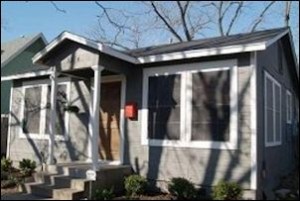Last week I published “Lean Urbanism and the Bureaucratic State,” a post that described a New Urbanist project to rectify the baleful effects of excess regulation upon urban re-development efforts. Questions arose in the comments regarding this initiative. What were these terrible regulations? Were the New Urbanists exaggerating the costs they imposed? Reader Richard N. Maier, a real estate manager for a major Central Texas homebuilder, contacted me to share his experience trying to redevelop a single property in Austin a few years ago. I republish this with his permission. Remember, this is Texas, where it is easier to build than almost anywhere in the country. — JAB
The Cost of Regulation: The Effect of Municipal Land Use Regulations on Housing Affordability
by Richard N. Maier
One of my professors at the University of Chicago told the class on the first day, “I don’t expect you to remember everything I talk about here, so my suggestion is for you to walk out of here with one takeaway from each class.” I can’t really say I did that every time, but sitting at convocation at Rockefeller Cathedral, I decided the one takeway that trumped all others was, “There is no free lunch.”
Throughout my career it has intrigued me how many of us travel through our careers and personal lives thinking otherwise.
A discussion of “affordable housing” is a perfect platform for testing this statement. While attending the University of Pittsburgh as an undergraduate, I worked for the Allegheny County Housing Authority in Pittsburgh. Our mission was affordable housing. The Authority constructed, rehabilitated and managed thousands of housing units aroud the count. This program was provided courtesy of the Federal government (a/k/a the American taxpayer). After getting my Bachelor’s degree, I entered the private sector and began my lessons in the practicalities of how such programs became re-titled as “exactions,” “incentives,” “impact fees,” “water quality preservation” and so forth. While I understand that various governments believe their regulations, laws and ordinances serve a variety of purposes that are in the public interest (neighborhood and historical preservation, safeguarding of public safety and the environment, “saving” resources, and so forth), the cost of that menu of delicacies can be expensive to the homebuyer and therefore a tax on the economy.
Inasmuch as my career the lat twenty-five years or so has centered around Austin and Central Texas, my examples will be drawn from that experience.
If life in the development/homebuilding business were simple, we could find a property, get it properly zoned, develop the lots or building sites, and construct the homes. But then it’s not, in fact, simple.
Let’s start with an actual example of building on a single lot in a central city residential neighborhood in Austin. A few years ago we contracted to purchase a lot in an area known as North Hyde Park. This example is utilized to illustrate the extreme costs incurred when developing in the central city, an area of high demand and low supply. The various regulations that overlaid this property were the zoning code, a residential design compatibility ordinance known as the “McMansion Ordinance” (all 26 pages of it), impervious cover limitations, “Neighborhood Conservation Combining District” regulations (a 28-page ordinance that supplements the zoning ordinance), handicapped accessibility requirements, sidewalk construction ordinances, a tree protection ordinance and an historic preservation overlay (which threatens even the simplest of structures with the prospect of being labeled “historic” or “significant”). While each of these eight regulation categories (which I consider to be menu items on the free lunch menu) have what the municipalities or jurisdictions consider to be public purposes, in many instances they are very costly to the ultimate homebuyer and contribute to the reduction in home affordability. As such, they are certainly not free. The following addreses a few of these categories and their impact on development.
Menu Item #1: Historic Preservation
The building lot in this real example in the City of Austin, Texas, was 80′ x 130′; approximately 10,400 square feet in total area. Situated thereon was a bungalow constructed in the early ’40s. It was about 90 square feet in size, had no particular architectural significance (there are probably a hundred similar structures within a mile and a half), was generally rented to students at the University of Texas and was acquired for the value of the land ($266,000) for new home construction. Despite the builder’s determination that the structure was beyond its useful life, the demolition permit was opposed by a neighbor (a renter, in fact; it should be noted that none of the neighbors who owned their homes opposed the demolition). This neighbor posited to the municipality that the structure to be demolished was historically significant and should be preserved. This declaration launched the seller of the house into an entirely new and unanticipated process of having to fight historic designation of the structure. The process from start to finish took approximately nine months during which time the property was left empty.



